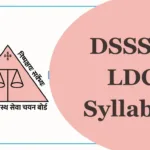The Graduate Management Admission Test (GMAT) is a pivotal step for many aspiring business professionals aiming to enroll in top-tier management programs. In 2025, the GMAT has been updated to better assess the skills relevant to today’s dynamic business environment. This guide will walk you through the current GMAT syllabus, providing a detailed breakdown of each section, the topics covered, and essential preparation tips to help you succeed.
Introduction to the GMAT Syllabus
The GMAT is designed to evaluate a candidate’s analytical, quantitative, verbal, and data interpretation skills. The 2025 edition of the GMAT, known as the GMAT Focus Edition, comprises three main sections:
- Quantitative Reasoning
- Verbal Reasoning
- Data Insights
Each section is 45 minutes long, making the total exam duration approximately 2 hours and 15 minutes. This streamlined format emphasizes critical reasoning, data analysis, and problem-solving abilities, aligning with the skills needed for today’s data-driven business world.
Section-by-Section Breakdown
1. Quantitative Reasoning
Purpose: This section assesses your ability to analyze data and draw conclusions using reasoning skills.
Topics Covered:
-
Arithmetic:
- Fractions, Decimals, and Percentages
- Ratios and Proportions
- Integers and Number Properties
- Powers and Roots
- Statistics: Mean, Median, Mode, Range
- Probability
-
Algebra:
- Equations and Inequalities
- Functions
- Exponents
- Absolute Value
Skills Developed: Problem-solving, analytical thinking, and quantitative analysis.
Question Type: Multiple-choice questions focusing on problem-solving.
Note: Geometry questions have been removed from this section in the latest syllabus update.
2. Verbal Reasoning
Purpose: This section evaluates your ability to read, understand, and analyze written material, as well as to evaluate arguments.
Topics Covered:
-
Reading Comprehension:
- Understanding main ideas and supporting details
- Drawing inferences
- Analyzing the logical structure
-
Critical Reasoning:
- Evaluating arguments
- Identifying assumptions
- Strengthening or weakening arguments
- Formulating or evaluating a plan of action
Skills Developed: Critical thinking, analytical reasoning, and reading comprehension.
Question Types: Multiple-choice questions focusing on reading comprehension and critical reasoning.
Note: Sentence Correction questions have been removed from this section in the latest syllabus update.
3. Data Insights
Purpose: This newly introduced section assesses your ability to analyze and interpret data from various sources, reflecting the growing importance of data literacy in the modern business world.
Topics Covered:
- Data Sufficiency: Determining if provided data is sufficient to answer a question.
- Multi-Source Reasoning: Analyzing data from multiple sources to answer questions.
- Table Analysis: Interpreting and analyzing data presented in tables.
- Graphics Interpretation: Understanding data presented in graphs and charts.
- Two-Part Analysis: Solving complex problems that require a two-part solution.
Skills Developed: Data analysis, interpretation, and synthesis; decision-making based on data.
Examination Pattern and Scoring
The GMAT Focus Edition consists of 64 questions distributed across the three sections, with each section lasting 45 minutes. The total score ranges from 205 to 805, with each section scored between 60 and 90 in 1-point increments. You have the flexibility to choose the order in which you take the sections and can take one optional 10-minute break during the exam.
Recommended Study Materials
To prepare effectively for the GMAT, consider the following resources:
- Official GMAT Guide: Provides real GMAT questions and detailed explanations.
- GMAT Focus Edition Prep Resources: Tailored materials that align with the updated exam format.
- Online Practice Tests: Simulate the test environment to build familiarity and confidence.
- GMAT Prep Courses: Structured courses offered by reputable test prep companies.
Preparation Tips
- Understand the Format: Familiarize yourself with the exam structure and question types.
- Create a Study Plan: Allocate time to each section based on your strengths and weaknesses.
- Practice Regularly: Consistent practice helps reinforce concepts and improve speed.
- Review Mistakes: Analyze errors to understand where you went wrong and avoid repeating them.
- Stay Updated: Ensure you’re using the latest.
FAQ for GMAT Syllabus
1. What is the GMAT Focus Edition syllabus for 2025?
The GMAT Focus Edition (2025) consists of three main sections:
- Quantitative Reasoning (assessing problem-solving and data sufficiency)
- Verbal Reasoning (covering reading comprehension and critical reasoning)
- Data Insights (analyzing and interpreting data through various formats)
2. Has the GMAT syllabus changed recently?
Yes, the GMAT Focus Edition introduced in 2023 brought significant changes:
- The Sentence Correction section was removed from Verbal Reasoning.
- The Geometry section was removed from Quantitative Reasoning.
- The Integrated Reasoning section was replaced by the new Data Insights section.
3. How long is the GMAT Focus Edition exam?
The total exam duration is 2 hours and 15 minutes, divided as follows:
- Quantitative Reasoning: 45 minutes
- Verbal Reasoning: 45 minutes
- Data Insights: 45 minutes
- One optional 10-minute break
4. What types of questions are in each GMAT section?
- Quantitative Reasoning: Multiple-choice questions, including problem-solving and data sufficiency.
- Verbal Reasoning: Multiple-choice questions, including reading comprehension and critical reasoning.
- Data Insights: Multiple-choice questions covering table analysis, graphical interpretation, and data sufficiency.
5. What is the scoring pattern for GMAT Focus Edition?
The GMAT Focus Edition is scored between 205 and 805, with each section scored from 60 to 90 in 1-point increments.
6. What topics are covered in GMAT Quantitative Reasoning?
The Quantitative section covers:
- Arithmetic (percentages, ratios, probability)
- Algebra (equations, exponents, inequalities)
- Word problems (time, work, and mixtures)
7. What are the key topics in GMAT Verbal Reasoning?
The Verbal section includes:
- Reading comprehension (passage-based questions)
- Critical reasoning (evaluating arguments, strengthening or weakening them)
8. What does the GMAT Data Insights section test?
This section evaluates data analysis skills using different data representations like tables, graphs, and charts. Questions include:
- Multi-source reasoning
- Graphics interpretation
- Two-part analysis
9. Is there a calculator available for the GMAT?
Yes, only the Data Insights section allows the use of an on-screen calculator. The Quantitative and Verbal sections must be solved manually.
10. What are the best study materials for the GMAT?
- Official GMAT Guide (GMAC)
- GMAT Focus Edition Prep Books
- GMAT Online Practice Tests
- Reputed GMAT Prep Courses (e.g., Manhattan Prep, Kaplan, Magoosh)
11. Can I choose the order of the GMAT sections?
Yes! The GMAT allows candidates to select the order in which they attempt the three sections.
12. How should I prepare for the GMAT effectively?
- Start with a diagnostic test to identify strengths and weaknesses.
- Follow a structured study plan, covering each section thoroughly.
- Practice with official GMAT questions and mock exams.
- Review mistakes carefully to improve accuracy and time management.
Latest Posts
- Step-by-step guide to download and apply for jee mains admit card 202
- Comprehensive 2025 government holidays and recruitment details for job seekers
- JEE Mains Admit Card 2025: Your Step-by-Step Guide to Downloading the Hall Ticket
- Everything You Need to Know About 2025 Government Holidays Recruitment
- Comprehensive Guide to rrb d group recruitment 2025 – Eligibility, Vacancies, and Application
- Detailed guide to nps trust recruitment 2025 vacancies, eligibility and apply process
- Comprehensive guide to hpcl recruitment 2025 notification, vacancies, and application process
- ignou bed admission 2025 complete recruitment guide with eligibility and process
- Comprehensive Guide to Indian Army Agniveer Recruitment 2025 Notification and Jobs
- Everything You Must Know About CBSE Board Exams 2025 Changes & New Rules



